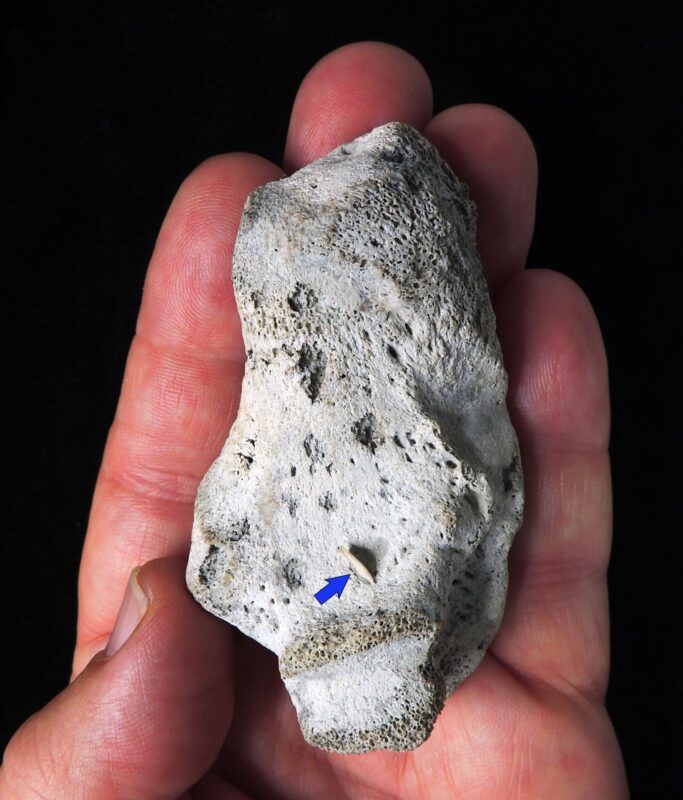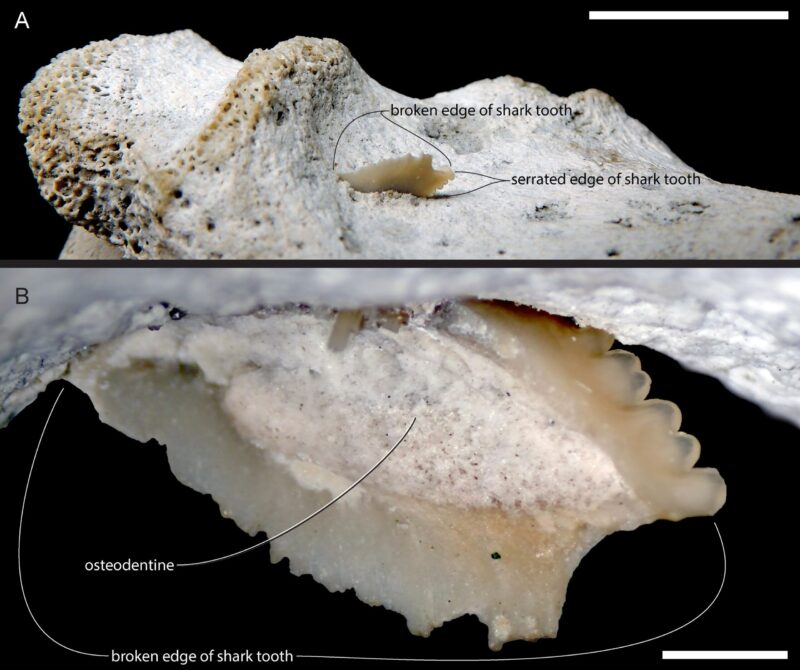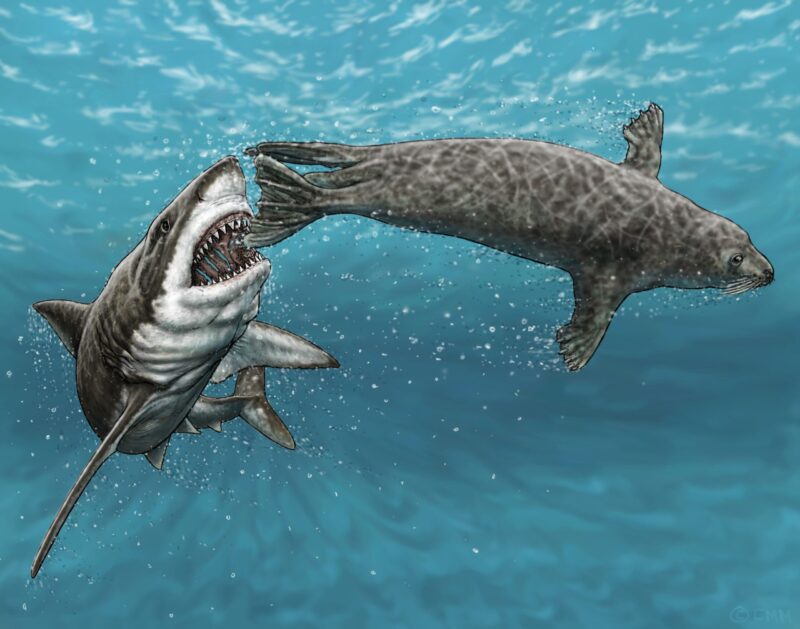
Figure 1. A seal heel bone showing the location of the tip of the embedded great white shark tooth (blue arrow). The seal bone was surface-collected by Paul R. Murdoch Jr. in a phosphate mine in Florida and is about 4.5 million years old.
Seals and great white sharks have co-existed for over 6 million years. Great whites hunt seals and now we are able to confirm that they have also been doing so for millions of years. Until now, no great white shark tooth has ever been found embedded in a fossil seal bone.
Here, for the first time, we report on the discovery of the tip of a fossilized great white shark tooth embedded in a fossilized seal heel bone (Figures 1 & 2). This unique two-for-one fossil was surface collected by Paul R. Murdoch Jr. in Mosaic’s South Fort Meade Mine in Florida, USA.
The isolated seal bone originated from within the Bone Valley Member of the Peace River Formation (Pliocene Epoch) and is therefore about 4.5 million years old. The partial tooth is identified as having come from an Early Pliocene great white shark, Carcharodon carcharias.
This discovery also represents the first great white shark tooth ever found embedded in any fossil bone. The embedded tooth may have come about as a result of active predation or scavenging. The presence of the tooth in the seal’s hind flipper suggests active pursuit and therefore active predation (Figure 3) as opposed to scavenging.
Regardless, whatever the nature of their encounter was, the seal did not survive, given there is no evidence of healing on the fossilized seal bone.
This report was published today in the journal Comptes Rendu Palevol (https://sciencepress.mnhn.fr/en/periodiques/comptes-rendus-palevol) by an international team including Stephen J. Godfrey (Curator of Paleontology, Calvert Marine Museum (CMM), Maryland, USA); Paul R. Murdoch Jr. (CMM Research Associate); Leonard Dewaele (Institute of Natural Sciences, and Antwerp University, Belgium); Victor J. Perez (St. Mary’s College of Maryland, USA); and Clarence Schumaker (Day Break Studios).

Figure 1. A seal heel bone showing the location of the tip of the embedded great white shark tooth (blue arrow). The seal bone was surface-collected by Paul R. Murdoch Jr. in a phosphate mine in Florida and is about 4.5 million years old.

Figure 2. Two enlarged views of the tip of the great white shark tooth embedded in the seal heel bone. The white scale bar in A equals 1cm and in B, 1mm.

Figure 3. Rendering by Shoe Schumaker of one of the ways in which the flipper might have been bitten by the great white shark, Carcharodon carcharias. This illustration depicts an active predatory encounter between the seal and the great white, although it may have come about as a result of scavenging. (Notes: The exact size of the predator and prey represented by the fossils are not known. The life-restoration of the seal is based mostly on the living Leopard seal). © Calvert Marine Museum, used with permission.


